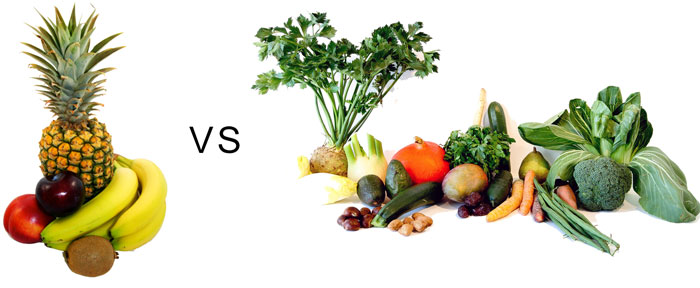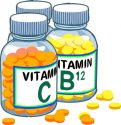 Vegetables and fruits are a very important source of food for humans and animals – just like air and water. Many animals are herbivores that rely on plants as their food to get Energy and survive. Therefore, herbivores animals and we humans require vegetables and fruits for a healthy life.
Vegetables and fruits are a very important source of food for humans and animals – just like air and water. Many animals are herbivores that rely on plants as their food to get Energy and survive. Therefore, herbivores animals and we humans require vegetables and fruits for a healthy life.
Vegetables and fruits both come from plants and are edible. However, they sometimes look very similar and it gets confusing to differentiate them. They may look similar but they are different in many ways.
What are Fruits?
 Fruits simply come from Flowering Plants that are also called angiosperms in botanical language. All the fruits come from flowers and are fleshy parts of a plant. However, they can have a wide variety of tastes (e.g. sweet, sour, and bitter) depending on the plant. Some of the famous fruits that are eaten worldwide are bananas, apples, lemon, oranges, watermelon, tomatoes, and coconuts.
Fruits simply come from Flowering Plants that are also called angiosperms in botanical language. All the fruits come from flowers and are fleshy parts of a plant. However, they can have a wide variety of tastes (e.g. sweet, sour, and bitter) depending on the plant. Some of the famous fruits that are eaten worldwide are bananas, apples, lemon, oranges, watermelon, tomatoes, and coconuts.
What are Vegetables
 Vegetables are also a part of plants which is eaten by human and animals as food. Other than fruits, all the other edible parts of plants are generally considered as vegetables e.g. Roots, stems, and leaves. Most of the vegetables are leafy and grassy, such as spinach, green beans, turnip, peas, cabbage, and carrots.
Vegetables are also a part of plants which is eaten by human and animals as food. Other than fruits, all the other edible parts of plants are generally considered as vegetables e.g. Roots, stems, and leaves. Most of the vegetables are leafy and grassy, such as spinach, green beans, turnip, peas, cabbage, and carrots.
Difference between Vegetables and Fruits
 Mostly every person knows about vegetables and fruits and differentiating between them gets confusing. Becoming a part of flowers, or other parts of plants is not the only difference between fruits and vegetables. But there are also other differences between them, for example, they have different tastes, nutrition amounts, and structures.
Mostly every person knows about vegetables and fruits and differentiating between them gets confusing. Becoming a part of flowers, or other parts of plants is not the only difference between fruits and vegetables. But there are also other differences between them, for example, they have different tastes, nutrition amounts, and structures.
- Fruits – they normally come from the flower of plants and contain seeds. The seeds inside them are the basis for the formation of new plants. Moreover, many common fruits that we eat taste sweet and are also served in the form of juices. Furthermore, many fruits are mistakenly considered as vegetables. For example, cucumbers, olives, zucchini, peapods, pumpkins, and tomatoes.
- Vegetables – According to the botany, parts of plants that can be eaten are called vegetables. Generally, vegetables are less tasty and less delicious than fruits and are normally cooked before being eaten.
Benefits of Vegetable and Fruits
Vegetables and fruits are full of vitamins, Minerals, and fibers which can improve health and prevent the problems of many diseases.
Fruits are the vital source for health it may contain important nutrients such as potassium, fiber vitamins.
Benefits of some common fruits are:
- Banana, tomato, and berries have potassium which prevents the problem of kidney stones.
- Citrus fruits, such as lemons, oranges, and grapes, contain antioxidants and vitamin C in great quantity which protects heart diseases, helps in wound healing and improves the immune system.
- Dry fruits, such as almonds and peanuts, have calcium, magnesium, phosphorus, and vitamins A-C-E in large quantities. These nutrients help in preventing diseases of bones, skin, and muscles.
Benefits of some common vegetable are:
- Cabbage contains vitamin C, calcium, and fiber which good for the immune system, bones, and digestive system.
- Green beans and dry beans provide protein, folic acid, iron, and potassium.
- Sweet potatoes are a good source of vitamin A-C and fibers
- Leafy green vegetables, such as spinach have a high amount of vitamin A-C, calcium, magnesium, and potassium.
Learn more about healthiest vegetables
Interesting Facts
- Spinach is the number one vegetable due to high amounts of many nutrients.
- Strawberries don’t belong to berries and they grow their seeds outside.
- 25% content of apples is air which makes them float in water.





